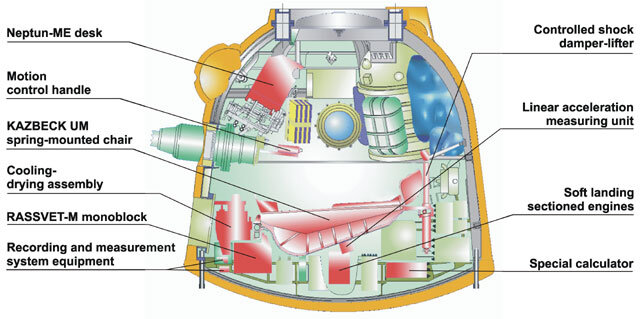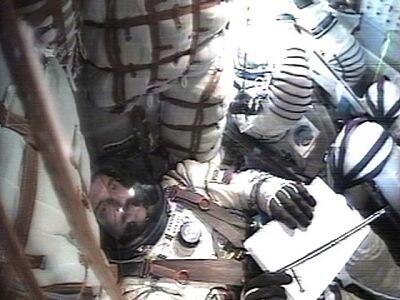Soyuz spacecraft: Made to measure
The Soyuz spacecraft, in which André Kuipers will travel to the International Space Station in April, has a long service record. With almost 37 years of manned flights, it is the longest serving manned spacecraft.
The Soyuz still bears some similarities to the Vostok capsule, which carried Yuri Gagarin on the very first manned space flight, and its successor, the Voshkod. In the mid-sixties, this design was adapted and improved until the first manned Soyuz was ready for launch on 23 April 1967. Since then, the spacecraft has undergone many more improvements. For example, the Soyuz T series was introduced in 1980 and followed seven years later by the Soyuz TM. The most recent version is the Soyuz TMA. It was on board the first of these that Belgian ESA astronaut Frank De Winne flew to the International Space Station in October 2002.

Switch
The most recent Soyuz launch took place in October 2003. ESA astronaut Pedro Duque steered the TMA-3 to the International Space Station. The task of bringing this spacecraft safely back to Earth after delivering a new one (the TMA-4) will fall to André Kuipers.
The Soyuz TMA consists of three parts: the orbital module, the re-entry module and the service module.
Orbital module
The orbital module is intended to provide living space for the astronauts. In it, they can sleep, wash and work on scientific experiments during their two-day journey to the Space Station. The orbital module sits on top of the re-entry module and, with a volume of 6.5 m3, is the biggest of the three.

Re-entry module
The re-entry module is the centre section of the Soyuz and has room for three astronauts. Only this section returns to Earth. On board, climate control systems provide adequate oxygen and maintain the correct humidity. The tailor-made seats, a parachute system and the retro-engines guarantee a safe landing.
Service section
Under the re-entry module is the service section of the spacecraft. This part is not accessible to the crew. It contains the fuel and oxygen tanks, steering thrusters, electronic communication equipment and navigational equipment. The solar panels on the outside of this module provide sufficient electricity for all sections of the Soyuz spacecraft.

Rescue system
Soyuz rockets are equipped with a rescue system that brings the crew to safety if an accident happens in the hours before or the first minutes after the launch. In an emergency, the re-entry module detaches from the launch vehicle and the other Soyuz components and is propelled a kilometre into the air in a matter of seconds. The capsule's parachutes then ensure a safe landing.




